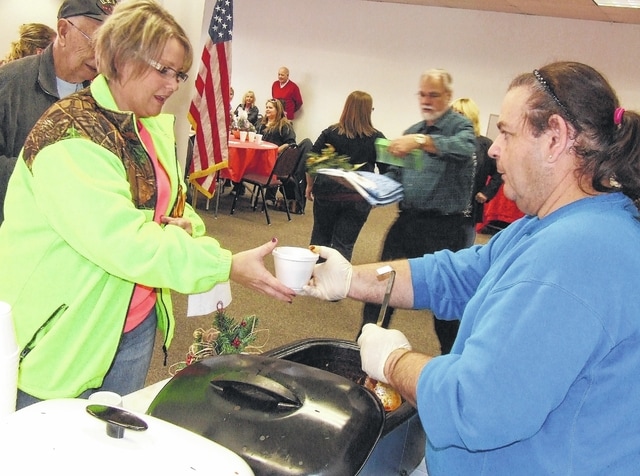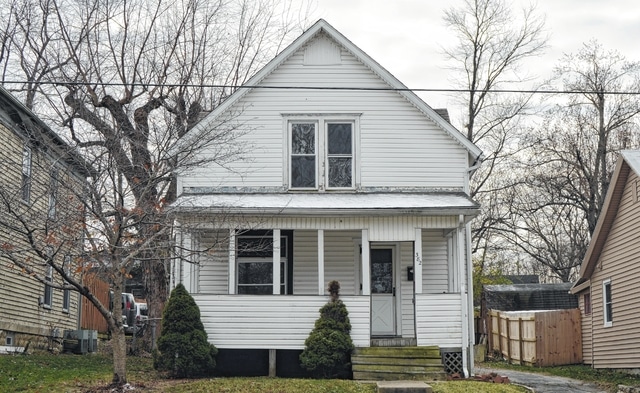

WILMINGTON — Executive Director Denise Stryker and others at the Clinton County Homeless Shelter are thankful this year for a community that cares enough to give homes to those who need shelter.
Stryker, who began as director for the shelter in 1994, said that in 1993 she didn’t know what she wanted to do, was depressed and prayed for God’s will to make itself evident.
She also went to California with family members. There, she saw homeless people who panhandled, milled around with carts holding all they owned and camping out in sleeping bags surrounding public restrooms on the beach.
“I remember praying … ‘Lord, put me in the position, help me to help someone more than just buying somebody coffee or giving them a $5 bill. Show me how I can help folks who are homeless,’” Stryker said.
About six months after returning to Wilmington, a family member told her they were looking for a director for the homeless shelter. Stryker applied, interviewed and got the job.
“I could feel God’s presence right there,” Stryker said. “This was His answer.”
Then, the homeless shelter consisted of one home, 36 Gallup Street. Men, women and children stayed there. The house could sleep 18, but it couldn’t house a family in one room and was cramped.
An anonymous donor gave the house next door to the shelter, which can now house 38 beds between both houses. Around the corner are the shelter’s offices. And next door to the offices is a house donated Tuesday, Nov. 17, where larger, donated items will be stored to help those who are able to leave the shelter into a new home.
Often, those success stories have nothing to take with them – beds, furniture, refrigerators and other appliances. The shelter receives such items from donations, and, in fact, doesn’t have enough storage room for all current donations.
Many items wind up being donated to other charitable organizations. For instance, summer clothes, in winter, get donated to the Salvation Army.
“If we had more space, we would not have to do that,” Stryker said. “So our goal and plan at this time is to use the house for donations that will be used and needed by the residents and other people in the community.
“There’s a lot of people that call in the community that have maybe a refrigerator go bad or they need multiple items,” Stryker said. “They may not need emergency shelter assistance, but they’re moving out on their own and they don’t have the finances to be able to set up a household.”
In addition to providing those in need with clothes, food, shelter and household items, the shelter also hosts two annual soup fundraisers in the fall and spring, organizes the annual cardboard city event and administers a homeless prevention rapid rehousing program.
The rapid rehousing program helps those with sustainable income find housing quickly.
“The goal is to get them out of the shelter as quickly as possible,” and into a home, Stryker said. “We have a lot of people, especially now, that have a job, that are working full time and have good income. There’s been a lot of different circumstances that led them to needing shelter, and the program can help pay rents and deposits and can help them move.”
As do many organizations funded by grants and donations, the shelter has needs. Stryker said she wants to expand the parking lot behind the shelter to include the recently acquired yard, and she said the shelter needs canned food for its pantry, toiletries and cleaning supplies, upgrades for the new building and lots of volunteers.
“We’re always needing help separating clothing donations, organizing things so we can find things easily when someone comes to us with a need,” Stryker said. “Our volunteers are truly the heart of the shelter. Without them, we would not exist.”
Seeing those they help, thanks to supporters, volunteers and donations, is an amazing experience, Stryker said.
“People have given and shared so much of their time and resources to help people they don’t even know,” Stryker said, her voice beginning to break. “It’s just amazing to me that there’s just such wonderful people in this county.”
“It’s totally been His will,” Stryker said. “And it’s been a blessing. You do get so much more back when you give and help others. You can never out-give God.”
Reach Nathan Kraatz at 937-382-2574, ext. 2510 or on Twitter @NathanKraatz.



